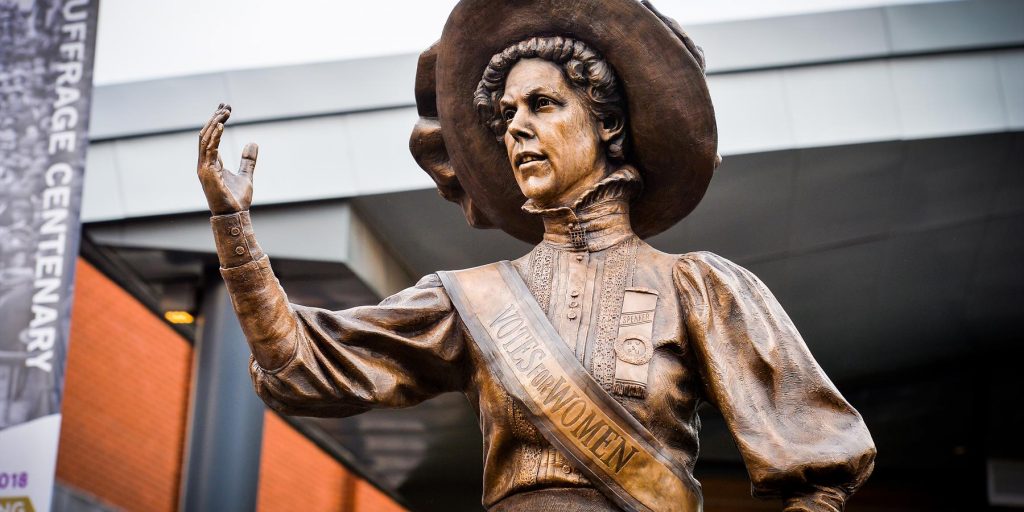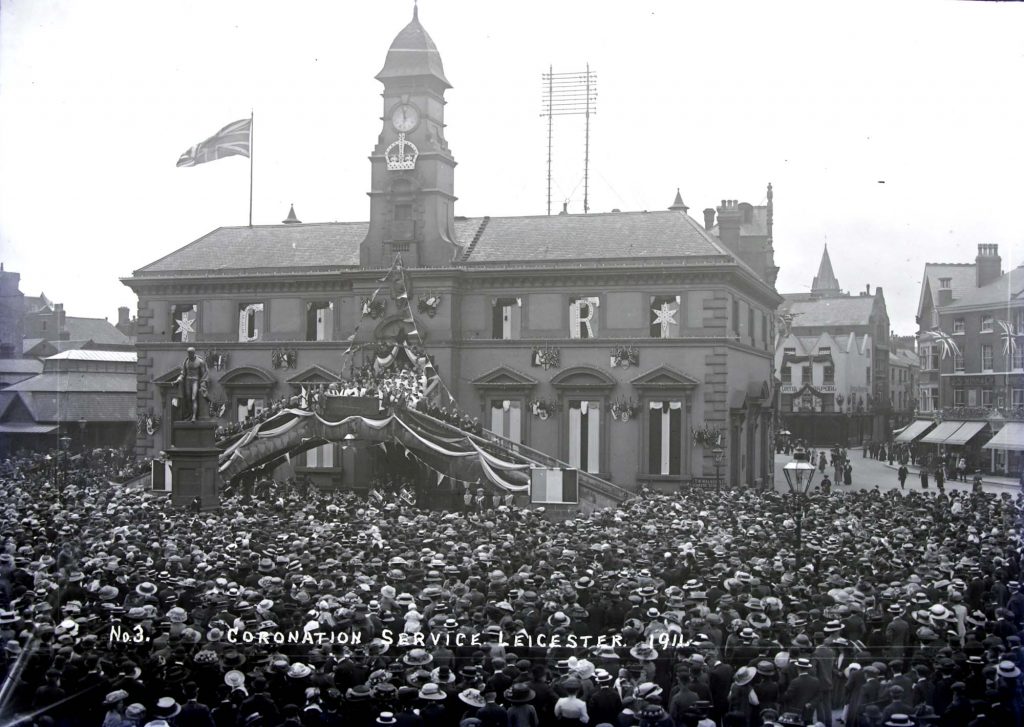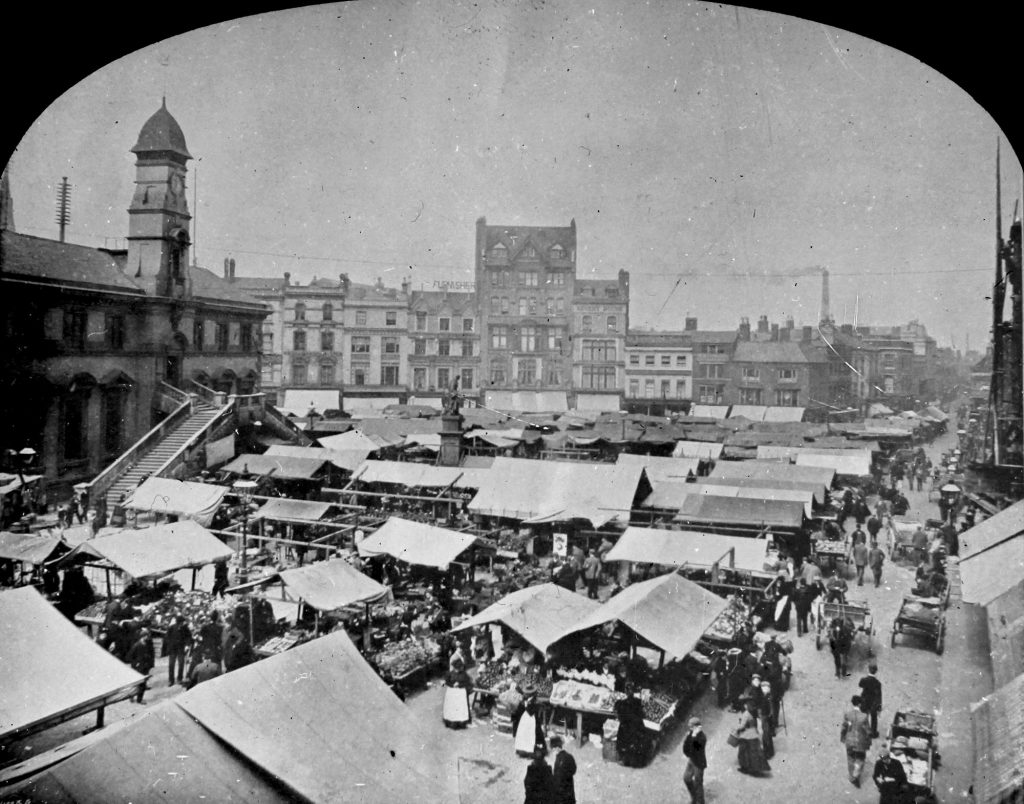A labyrinth of rich colours, smells and sounds, the Leicester Market is anything but easy to miss. Standing at its entrance, one has a spectacular view of rows of fruits and vegetables. Every nook and cranny has its own unique scent- some of sweet-smelling flowers while others of musty second-hand books. Upon venturing deeper, one finds interesting pieces of jewellery, colourful fabrics and cosmetics.

But did you know that the Leicester Market is more than just a hub for fruits and vegetables? In 1905, 500 men set out from the Leicester Market on a 100-mile march to London to raise awareness about unemployment and worker’s rights. With grim sunburnt faces, the protestors marched through ill weather conditions, extreme exhaustion and dehydration, cheered on by over 30,000 people in support of the Leicester marchers. They were led by prominent activists like Amosh Sherriff and Alice Hawkins, who forever changed the history of the Leicester Market from that of any ordinary marketplace, to a sphere of cultural and political importance.
To gain some insight into the history of the Leicester Market, Pukaar asked Gurinder Singh Mann, the Heritage Panel Officer at the Leicester City Council.
“When you think ‘market’, you think of fruits and vegetables. But here, specifically, there is that strong political connection.” Mr Mann told Pukaar.
Over 700 years old, the first record of the Leicester Market dates back to 1298, although it is possible that the Market could be older.

“In 1589, Queen Elizabeth I gave a Charter declaring the market an official market, in which she referred to the Leicester market as ‘Saturday Shambles’. Interestingly, the word ‘shambles’ is a derogatory term, so I don’t really know why she used it. But I think she was just referring to the busy, chaotic nature of the market, always filled with people.”
And indeed, shambles it was. At the time, the Leicester Market was not a single unified market, but a series of small markets scattered across town, each trading either corn, hay or cattle. However, as Leicester progressed from being a small town to a large city, in the 1800s there were qualms about the sale of animals within the city centre. By 1872, the cattle market, alongside the sheep, horse and swine markets moved to Welford road, whereas the other markets converged to form what we call the Leicester Market today.
One of the more prominent buildings in the Leicester Market is the Corn Exchange, an Italianate-style building erected in the 1850s that stands out due to the massive two-flight staircase decorating the front of the structure. It almost seems as though its architect F. W. Ordish built the staircase with the prior knowledge that it would one day serve as the perfect podium for political figures to stand above the Leicester Market and address the masses below.
However, the history of the Corn Exchange is much darker than known. The building was once preceded by the Gainsborough of 1509, a two-storey law court with a dungeon that served as a prison underneath. Many prisoners had their last meals in the ancient taverns surrounding the Leicester Market, before being taken to the Gallow Tree. One such inn known as the Green Dragon was particularly well-known for serving traders and for being the site of the murder of John Fenton. Its popularity led to the renaming of that area as the Green Dragon Square in 2020.
“The Leicester Market has changed a lot over the years – in its importance, its use and also the names and locations that it has had in Leicester.”

In the 20th century, the air in Leicester became charged with an atmosphere of political unrest, as unemployment rates increased following the end of the Boer War in 1902. Alice Hawkins, alongside Amos Sheriff, organised the Leicester Unemployed March in 1905. In 1906, Sylvia Pankhurst joined hands with Alice Hawkins to rally for women’s right to vote, leading to the establishment of the Women’s Social and Political Union (WSPU) in Leicester. The Leicester Market became the hub for such political and social activities, and was the starting point for many movements that paved way for historical milestones such as the Representation of the People Act 1918, an act that gave everyone in England the universal right to vote.
“That is why a statue of Alice Hawkins was put up in the Leicester Market in 2018, the centenary year of the 2018 Representation of the People Act.”
The Leicester Market’s historical significance has attracted many tourists, including that of royal lineage. The Marketplace has served as the location for celebrating the Coronation of King George V in June 1911. This trend has carried on till recent times, when King Charles and his wife Camilla visited the Leicester Market to formally reopen the Green Dragon Square in February 2020.
Today, the Leicester Market remains as popular as ever. It is a place for everything that makes Leicester unique- fruits, vegetables, interesting jewellery and most importantly, history, tradition and culture. As for its future, all we can predict is that the Market will continue to evolve, transforming from a marketplace to a political sphere as and when needed by the people of Leicester, as it has done throughout the last 700 years.



